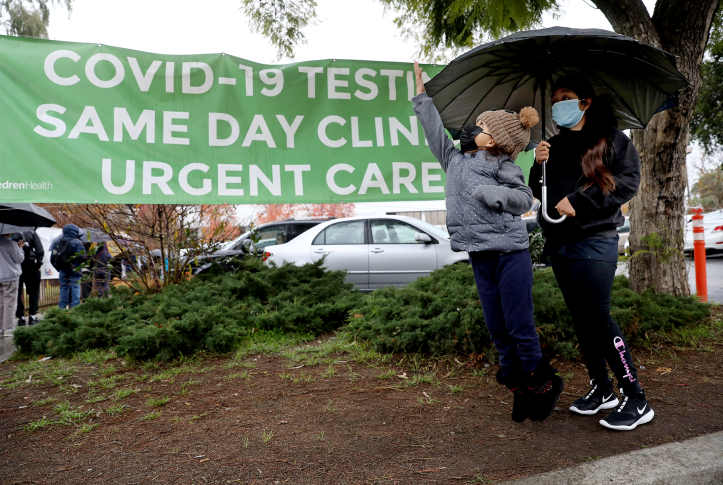When the Secretary of Health and Human Services declares an end to the COVID-19 public health emergency (PHE) period, it also will mark the end of Medicaid’s continuous enrollment guarantee that protects beneficiaries from coverage interruptions. Between 2020 and 2022, Medicaid’s continuous enrollment protection contributed to a 25 percent increase in Medicaid enrollment, ensuring initial and stable coverage for the pandemic’s highest-risk populations, disproportionately people of color. Health care safety-net providers will play a critical role during the wind-down by helping mitigate unnecessary coverage interruptions and assisting new applicants in navigating initial enrollment.
Ending continuous enrollment will result in an estimated 13 million to 16 million people losing coverage. This figure could be far higher, given the potential disruption caused by redetermining eligibility for more than 80 million people in a compressed time period, even as new applications flow in. Despite Affordable Care Act (ACA) reforms that streamlined the process, reviewing millions of beneficiaries in a short time presents enormous challenges. (States will be given 14 months to complete the process).
Among those facing the highest risk of coverage loss are poor working-age adults in states that have not expanded Medicaid under the ACA. Among these traditional adult categories, financial eligibility averages around 41 percent of the federal poverty level — that is, slightly more than $9,000 for a family of three. Medicaid beneficiaries face elevated health risks and are at greatest risk for health inequities, which makes coverage loss an even greater cause for concern. Furthermore, the affected population disproportionately lives in underserved communities that lack sufficient resources to help ensure smooth navigation of the renewal process.
Medicaid beneficiaries depend heavily on safety-net providers for care, especially “core” safety-net providers, defined as those obligated to care for all residents of their service area regardless of ability to pay or source of insurance. Core providers serve as many as one of six Medicaid beneficiaries. These providers — community health and mental health centers, Ryan White CARE Act clinics, Title X Family Planning Program clinics, clinics receiving Title V Maternal and Child Health Block Grant funding — are critical sources of care for underserved communities and vulnerable populations. Safety-net providers have assumed ongoing responsibility as a source of COVID-19 vaccination and treatment.
Safety-net providers also play an important role in Medicaid enrollment and renewal; on average, a community health center employs more than four staff members dedicated to enrollment, who provide outreach and one-on-one assistance for patients navigating the process. To prepare for redetermination, about 37 percent of community health centers say they have expanded enrollment assistance staff; one-third have hired additional outreach and enrollment staff; nearly half report efforts to identify patients at risk of losing coverage; and 42 percent plan to schedule advance appointments to ensure smooth renewals. Some institutionalized beneficiaries living with multiple chronic conditions may qualify for individualized case management during the redetermination process. But millions of community residents living with chronic conditions will not. Safety-net providers will play an important role in identifying and supporting high-risk patients whose health could be seriously compromised by coverage disruption. Typically, these added responsibilities have come with little or no additional targeted funding support.
Unwinding continuous Medicaid will have numerous consequences. First, as patients lose coverage, they also will lose their membership in managed care plans that provide access to needed specialized care through provider networks. Patients’ relationships with core safety-net providers will survive because these providers have a mission to serve patients regardless of insurance status or ability to pay. But getting specialized off-site care, such as advanced cardiac services or mental health and addiction treatment, will be a struggle. The stakes are high: 90 percent of community health centers expect their patients to forgo various types of care if they lose coverage.
Second, as patients lose insurance, providers will lose revenue. Grant funding, while vital, represents only a small fraction of operating revenue; Medicaid is a key source of funding. Revenue loss could grow if states also eliminate telehealth services tied to the PHE, which many beneficiaries depend on. Lost Medicaid revenue will coincide with the loss of supplemental pandemic-related grant funding for safety-net providers, as no new provider relief funds have been approved in 2022.
The end of Medicaid continuous enrollment will cause major disruption, but states can take steps to mitigate the impact. They can use payment incentives that reward safety-net providers for furnishing necessary support services to beneficiaries transitioning out of Medicaid to other insurance or for identifying sources of free or low-cost specialty care not available through the safety-net clinic itself. States and localities also can supplement federal funding with additional grant funding to help support providers’ continuous enrollment wind-down services.
Nonprofit hospitals have community benefit spending obligations that in turn could be used to supplement the resources safety-net providers have to undertake these additional wind-down activities. These hospitals also could play a crucial role in ensuring the availability of staff specialists to help keep high-need patients medically stable during a highly disruptive period. Finally, ACA insurance marketplaces could closely coordinate with safety-net providers to help these providers ensure patients can make the Medicaid-to-marketplace transition without disruption when eligible.
Together, these steps could help safety-net providers fulfill services that are crucial to supporting their communities.






